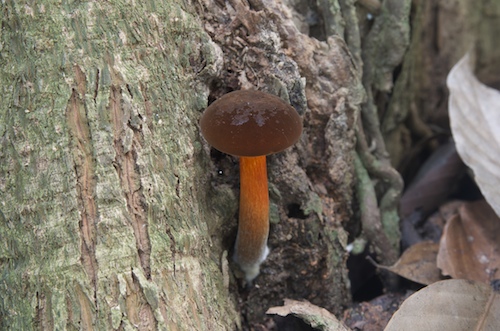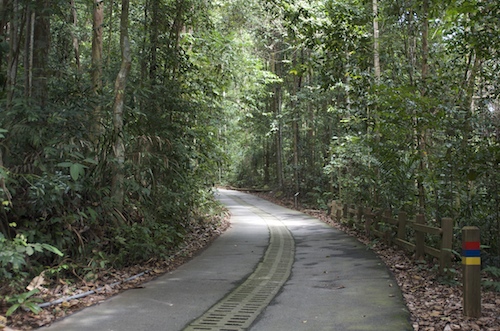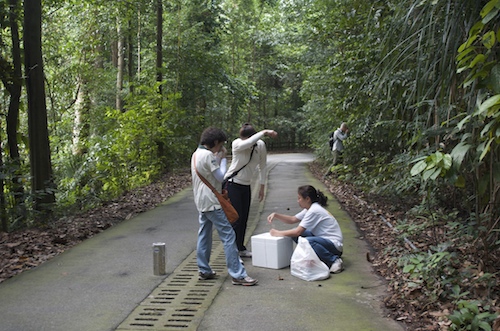Singapore Fungi
This wiki site has been created to provide further information on the fungi of Singapore, in collaboration with Singapore Botanic Gardens.
Contents
Overview
EJH Corner was a pioneer of the systematic study of tropical fungi, facilitated by his 16 years of tenure at what is now the Singapore Botanic Gardens. His careful survey and description of macrofungi (mushrooms and allies) from the Gardens and the Malay peninsula are still the ultimate references for mushrooms of Southeast Asia. Yet, interpretation of Corner’s collections today is hampered by their poor preservation and compounded by the limited informativeness of micromorphological features, alone.
Project Summary
Southeast Asia is extraordinarily rich in fungi, yet it remains severely underdocumented. Collecting fungi with routine surveys is an essential task that is best done by local practitioners who are present throughout the fruiting season and can take advantage of sporadic, short-lived, and typically unpredictable episodes of synchronized fruiting. However, classical surveys alone cannot uncover the true diversity of fungi at any given site because many fungi do not consistently appear in the reproductive phase of their life cycles. Therefore, surveys of fungal diversity today are increasingly relying on documenting cryptic fungal diversity using environmental sequencing, which has been made possible through recent advances and efficiencies in next-generation sequencing. The mycota of southeast Asia is in critical need of a robust, reliable resource using molecular-based taxonomy of modern, vouchered collections combined with environmental sequencing. The Singapore Botanic Gardens is ideally suited to serve in this capacity due to its history of mycology by Corner and others, and to its key location in southeast Asia.
Today, fungal surveys rely heavily on molecular-based techniques to augment classical methods of field collecting. This is largely because molecular analysis of environmental samples has shed light on an enormous unknown diveristy of fungi that are unculturable and/or rarely or ever produce structures visible to the naked eye. Moreover, even the relatively well-known groups of fungi, such as the mushrooms and allies, are fraught with cryptic species, confused taxonomy and nomenclature, and seemingly limitless new discoveries. A reliable molecular reference library is desperately needed to both help sort-out what is already known and to facilitate systematic surveys in the present day, greatly facilitating the discovery of new species and accurately placing them on the fungal tree of life. Unfortunately, the DNA is poorly preserved in most of Corner’s collections (pers. obs). Thus, there is a great need for recollecting in all of Corner’s localities with proper documentation and preservation. DNA sequencing of these modern collections will help to provide a much-needed DNA reference database that will facilitate our understanding of fungal diversity throughout the region.
Field Sites and Habitats
So far the collecting has concentrated on the Singapore Botanic Gardens and Bukit Timah reserve. Future collecting will aim to cover all habitats in Singapore.
Mushroom collections
1. Collections arranged sequentially
2. Collections arranged taxonomically
3. Gallery of all collection images
Ectomycorrhizal Roots
Authors
Acknowledgements
This work has been generously supported through a 2014 Singapore Botanic Garden Research Fellowship to BD. Special thanks to Nigel Taylor, David Middleton, and the National Parks Board for supporting this work.
Appendix
See also
A large degree of overlap in fungal taxa is expected throughout the region. See Sarawakfungi wiki and it's parent site Sarawakfungi.org for information relating to recent and ongoing surveys in Sarawak on the island of Borneo.


